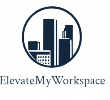In today's rapidly changing business landscape, the traditional office setup is increasingly being replaced by flexible workspace design used for commercial office space.
This innovative approach is designed to accommodate the evolving needs of employees and foster a collaborative and productive work environment.
Understanding Workspace Designs
Let’s explore the various aspects of flexible workspaces and the significant benefits they provide.
1. Adaptability
- A defining feature of flexible workspaces is their adaptability, enabling organizations to respond effectively to shifting demands.
- Dynamic Environments: These spaces can be quickly reconfigured to serve multiple purposes. For instance, a conference room can transform into a brainstorming area, allowing teams to work together in a way that suits their immediate needs.
- Scalability: As companies grow or pivot in focus, flexible layouts can easily accommodate new team members or projects. This flexibility eliminates the need for costly renovations and ensures efficient use of space.
2. Collaboration & Creativity
- Flexible workspaces excel in promoting collaboration and sparking creativity among team members.
- Open Areas: Communal spaces are designed to encourage informal interactions, which can lead to innovative ideas and solutions. Employees can connect organically, fostering a sense of community.
- Dedicated Collaboration Zones: While open spaces are great for casual meetings, designated areas equipped with the right tools help teams focus on structured tasks, ensuring productivity and effective collaboration.
3. Flexible Working Hours
- In addition to physical workspace flexibility, many organizations are adopting flexible working hours to enhance employee satisfaction.
- Personalized Schedules: Allowing employees to select their working hours can significantly improve their work-life balance. This flexibility enables them to attend to personal matters without compromising their professional responsibilities.
- Peak Productivity: Employees can choose to work when they feel most productive, whether that’s early in the morning or later in the day. This tailored approach often leads to better quality work and increased efficiency.
4. Cost-Effectiveness
- Investing in flexible workspace design can yield substantial financial benefits for businesses.
- Optimized Space Usage: By creating multi-functional areas, organizations can reduce the need for dedicated meeting rooms and private offices that may not always be in use. This efficient utilization of space maximizes return on investment.
- Lower Overhead: Streamlined operations and reduced real estate costs allow companies to allocate their budgets more effectively, freeing up resources for other critical initiatives.
5. Employee Well-Being
- A thoughtfully designed flexible workspace directly contributes to employee well-being and overall job satisfaction.
- Ergonomic Design: Incorporating comfortable furniture and layouts helps promote physical health and reduce workplace fatigue. A comfortable environment enables employees to focus better on their tasks.
- Natural Light & Greenery: Access to natural light and indoor plants enhances the aesthetic of the workspace and positively influences mood and productivity. Research indicates that exposure to nature can lower stress levels and boost creativity.
6. Technology Integration
- Modern flexible workspaces rely on advanced technology to facilitate connectivity and collaboration.
- Smart Solutions: Utilizing booking systems for meeting rooms and shared spaces helps streamline scheduling and reduce conflicts. This ensures that employees can efficiently find and utilize available resources.
- Remote Collaboration Tools: With the right technology, flexible workspaces support hybrid teams effectively. Video conferencing and collaboration software enable seamless communication, regardless of where team members are located.
7. Attracting Talent
- In the competitive job market, a flexible workspace can be a powerful tool for attracting and retaining top talent.
- Work-Life Balance: A commitment to flexible work arrangements reflects a company’s dedication to employee well-being. Prospective employees are increasingly prioritizing workplaces that allow for a healthy balance between professional and personal lives.
- Modern Amenities: Thoughtful design elements, such as relaxation areas, fitness facilities, and casual meeting spots, contribute to a desirable workplace culture. These features help organizations stand out in the eyes of potential recruits.
Conclusion
Investing in flexible workspaces and hours is not merely a response to current trends; it is a strategic choice that positions businesses for long-term success. By embracing adaptability, fostering collaboration, and prioritizing employee well-being, organizations can create environments that boost productivity and enhance job satisfaction.
As we navigate the future of work, flexible spaces and schedules will be critical in shaping engaged and successful teams. In a world where change is the norm, flexibility may well be the key to unlocking a brighter future for both employees and organizations. Now your question must be who does this planning and executing end to end modification on flexible workspace interior to add value for your long term clientele. So when its come to such workplace to build fanatics workplace it boils down to experience and efficient space management.


Comments
Post a Comment